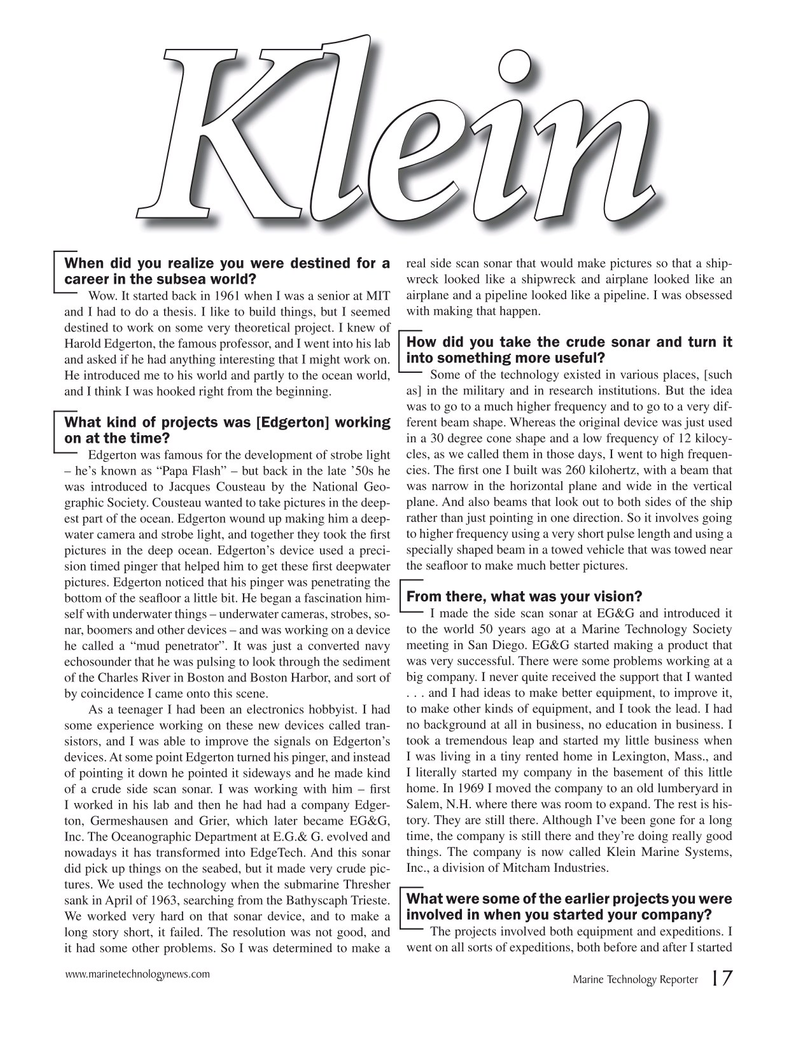
Page 17: of Marine Technology Magazine (September 2017)
Ocean Observation: Gliders, Buoys & Sub-Surface Networks
Read this page in Pdf, Flash or Html5 edition of September 2017 Marine Technology Magazine
KleinKlein real side scan sonar that would make pictures so that a ship-
When did you realize you were destined for a wreck looked like a shipwreck and airplane looked like an career in the subsea world?
Wow. It started back in 1961 when I was a senior at MIT airplane and a pipeline looked like a pipeline. I was obsessed and I had to do a thesis. I like to build things, but I seemed with making that happen. destined to work on some very theoretical project. I knew of
How did you take the crude sonar and turn it
Harold Edgerton, the famous professor, and I went into his lab into something more useful?
and asked if he had anything interesting that I might work on.
He introduced me to his world and partly to the ocean world, Some of the technology existed in various places, [such and I think I was hooked right from the beginning. as] in the military and in research institutions. But the idea was to go to a much higher frequency and to go to a very dif- ferent beam shape. Whereas the original device was just used
What kind of projects was [Edgerton] working in a 30 degree cone shape and a low frequency of 12 kilocy- on at the time?
Edgerton was famous for the development of strobe light cles, as we called them in those days, I went to high frequen- – he’s known as “Papa Flash” – but back in the late ’50s he cies. The

 16
16

 18
18
